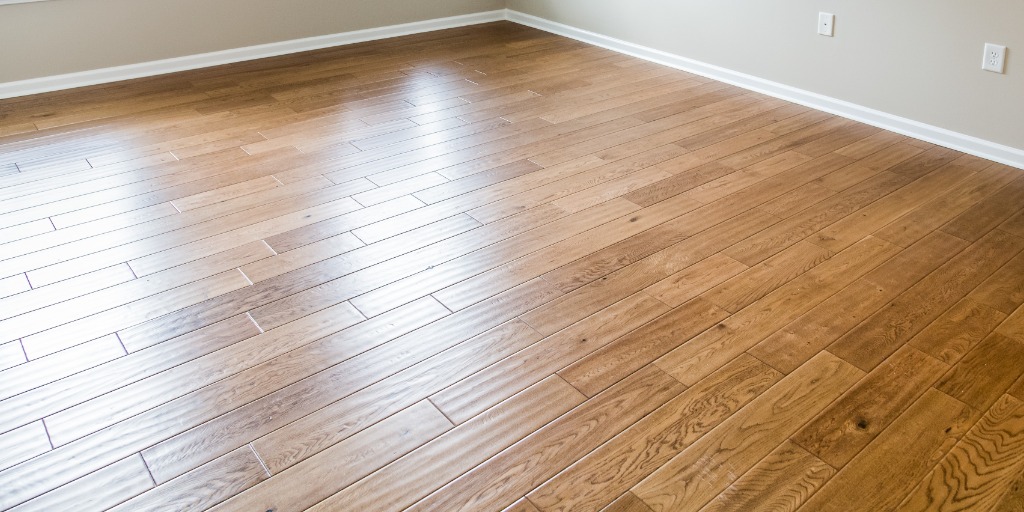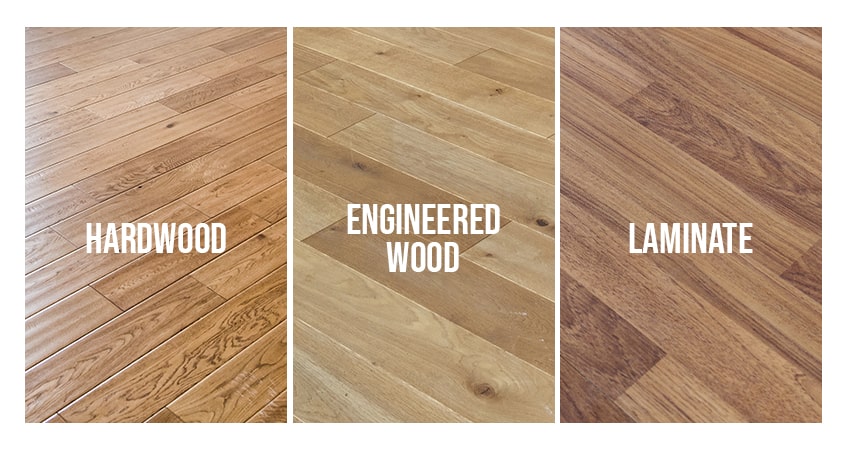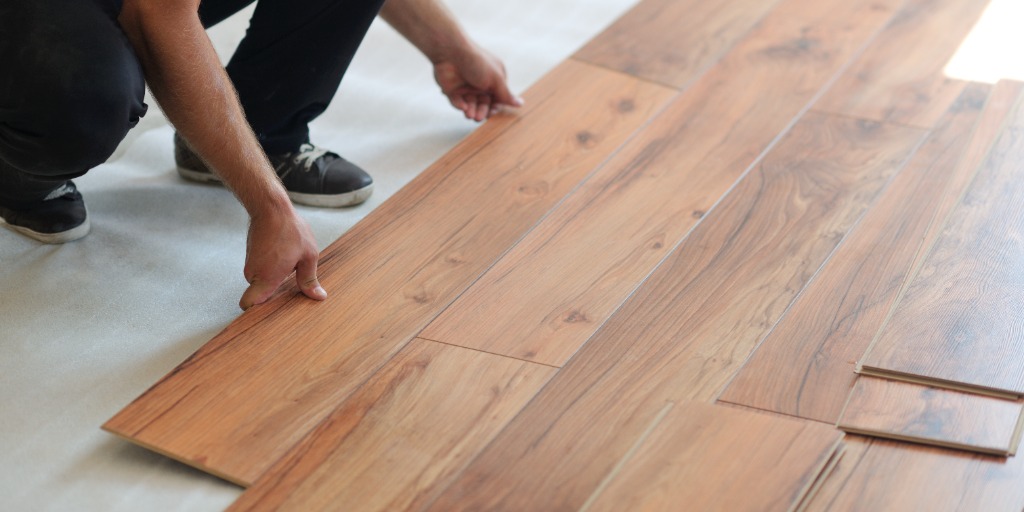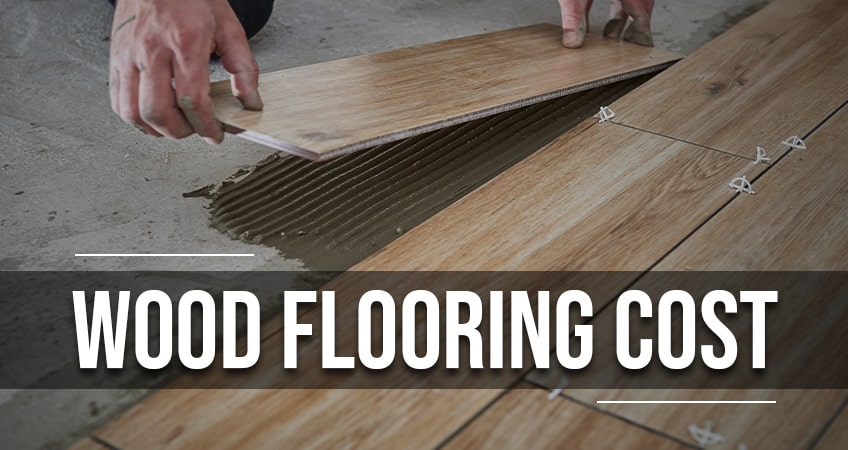Wooden floors are a timeless choice that adds elegance and warmth to any home. Whether you’re a homeowner looking to enhance your living space or a DIY enthusiast eager to tackle a new project, understanding the costs associated with wood flooring is essential.
This guide will break down the expenses, helping you make an informed decision that fits your budget.
Benefits of wood flooring in homes
Wood flooring offers numerous benefits that make it a popular choice among homeowners. First and foremost, it adds a touch of natural beauty and sophistication to any room. The variety of grains, colours, and finishes available ensures that you can find the perfect match for your décor.
Additionally, wood flooring is durable and long-lasting. Unlike carpet, which needs frequent replacement, a well-maintained wood floor can last for decades. It’s also easier to clean and maintain, making it an excellent choice for families with pets or allergies.
Lastly, wood flooring can increase the value of your home. Potential buyers often appreciate the timeless appeal of wood floors, making them willing to pay a premium for a home with quality flooring.
Different types of wood floors

When it comes to wood flooring, there are several types to choose from. Each type has its unique characteristics and price points, so it’s essential to understand the differences.
Solid wood flooring
Solid wood flooring, also known as hardwood flooring, is made from a single piece of timber, typically 18-20mm thick. It’s known for its durability and can be sanded and refinished multiple times. However, it can be more expensive and sensitive to changes in humidity.
Engineered wood flooring
Engineered wood flooring consists of a top layer of real wood veneer bonded to several layers of plywood. This construction makes it more stable and resistant to changes in humidity. It’s also generally less expensive than solid wood but still offers the look of natural wood.
Laminate flooring
Laminate flooring is a more budget-friendly option that mimics the appearance of wood. It’s made from a photographic layer of wood grain encased in a protective layer, all mounted on high-density fibreboard. While it’s not real wood, it’s durable and easy to install, making it a popular choice for DIY projects.
Cost factors for wood flooring

Understanding the cost factors involved in wood flooring will help you budget effectively. Here’s a detailed breakdown of the various expenses you can expect.
Material costs
The cost of wood flooring varies significantly based on the type of material you choose.
- Pine: £35 per metre squared
- High-end Hardwood: £85+ per metre squared
- Laminate: £45 per metre squared
Wood flooring installation costs
Installation costs can also vary depending on the type of wooden flooring and the complexity of the installation.
- Laminate Installation: £30 per metre squared
- Natural Wood Installation: £35 per metre squared
- Herringbone Pattern Installation: £75 per metre squared
- Parquet Flooring Installation: £35 to £195 per metre squared
Additional costs to consider
Apart from material and installation costs, there are several additional expenses you may need to budget for:
- Carpet removal and disposal: £7 per metre squared
- Skirting board installation: £9 per metre
- Beading: £7 per metre
- Door trimming (per door): £60
- Floorboard replacement (labour + materials): £50 per metre squared
Daily labour costs
On average, you can expect to pay around £250 per day for professional labour. This cost can vary based on the complexity of the job and the region you live in.
All costs quoted above are averages based on current market price. For the most accurate quote we always recommend reaching out to a variety of different professional suppliers and installers for a personalised quote.
Hardwood flooring vs engineered flooring vs laminate

When deciding between wood flooring and engineered flooring, several factors come into play, including cost, durability, and appearance.
Wood flooring costs
- Hardwood flooring cost: Generally more expensive due to the high quality of the material. Hardwood flooring costs can range from £35 to £85+ per metre squared for the material alone.
- Engineered wood flooring cost: More budget-friendly, with costs typically lower than solid wood. Prices can range from £25 to £70 per metre squared.
- Laminate flooring cost: The most budget-friendly option with prices ranging from £10 to £30 per metre squared.
Durability
- Hardwood flooring: Highly durable and can be sanded multiple times. However, it is susceptible to humidity changes, which can cause warping.
- Engineered wood flooring: Offers more stability and resistance to humidity changes. While it can be sanded, it has a limit to the number of times it can be refinished.
- Laminate flooring: Durable and resistant to scratches and stains; however, it cannot be sanded or refinished like real wood.
Appearance
- Hardwood flooring: Known for its natural beauty and warmth, with a variety of grains, colours, and finishes to choose from. It can also add value to your home.
- Engineered wood flooring: Offers the look of real wood at a lower cost. However, due to its top layer being real wood veneer, it may not have the same depth and character as solid wood.
- Laminate flooring: Can mimic the appearance of real wood; however, it lacks the authenticity and warmth of natural wood.
For a more in depth evaluation of this topic, be sure to check out this blog.
Expert tips for choosing the right wood flooring within your budget

Choosing the right wood flooring within your budget doesn’t have to be overwhelming. Here are some expert tips to help you make an informed decision.
Assess your needs
Before making a purchase, assess your specific needs. Consider factors like foot traffic, the presence of pets, and the room’s humidity levels. For high-traffic areas, you might want to opt for a more durable option like engineered wood.
Plan for the long term
While it might be tempting to go for the cheapest option, consider the long-term benefits of investing in quality material. High-quality solid hardwood flooring may have a higher upfront cost but can save you money in the long run due to its durability and lower maintenance needs.
Look for deals and discounts
Many retailers offer seasonal discounts or promotions. Keep an eye out for these deals to get the best value for your money. Additionally, buying in bulk can sometimes lead to significant savings.
FAQ
Can I save money by fitting my own flooring?
Yes, you can save money with DIY hardwood flooring installation, but it’s important to consider a few key factors. While installing hardwood floors yourself eliminates professional labour costs, achieving a professional result requires the right tools and a certain level of expertise. Without access to specialised equipment such as saws, nail guns, and sanding machines, as well as a thorough understanding of the installation process, you may find it challenging to achieve a quality finish.
Incorrect installation can lead to issues such as uneven surfaces, gaps, and even damage to the flooring material. Therefore, while DIY hardwood flooring installation can be cost-effective, investing in professional installation may save you time and potential headaches, ensuring a high-quality result.
Is underlay necessary for hardwood flooring?
Yes, underlay is generally considered necessary for hardwood flooring, especially for engineered and laminate types. Underlay provides several benefits, such as improving insulation, reducing noise, and increasing comfort underfoot. It also acts as a moisture barrier, protecting the flooring from any dampness that may rise from the subfloor. When selecting an underlay, it’s important to choose one that is compatible with your specific type of wood flooring to ensure optimal performance and longevity.
How do I maintain my wood flooring to ensure its longevity?
Maintaining wood flooring to ensure its longevity involves regular cleaning and periodic maintenance. For daily upkeep, sweep or use a vacuum with a soft brush attachment to remove dust and debris. Avoid using wet mops or steam cleaners, as excessive moisture can damage the wood. Instead, use a slightly damp mop with a pH-neutral wood floor cleaner.
Protect the flooring from scratches by using furniture pads and placing rugs in high-traffic areas. Additionally, it’s advisable to control the humidity levels in your home to prevent the wood from expanding or contracting. Periodically, the floor may need refinishing or re-sealing to restore its original appearance and provide continued protection.
Conclusion
Wood flooring is a valuable investment that can enhance the beauty and functionality of your home. By understanding the various types of wood flooring, their costs, and additional expenses, you can make an informed decision that fits your budget and meets your needs.
Whether you’re leaning towards solid wood, engineered wood, or even laminate, each option has its unique benefits. Remember to consider long-term value, durability, and appearance while making your choice.
Get your free quote from our team!
If you’re ready to transform your home with beautiful wood flooring, get in touch with LT Flooring. Our experts can provide you with a free and precise quote and help you explore our extensive range of options.
Don’t wait; elevate your home’s interior with the timeless elegance of wood flooring today!

